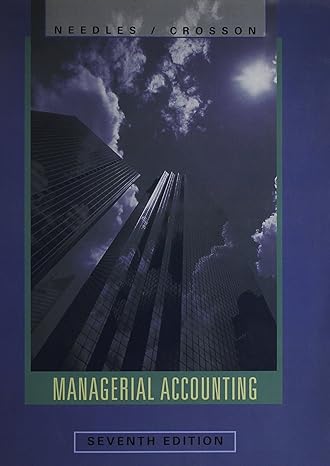Answered step by step
Verified Expert Solution
Question
1 Approved Answer
Required information [The following information applies to the questions displayed below.] Warnerwoods Company uses a perpetual inventory system. It entered into the following purchases and
Required information [The following information applies to the questions displayed below.] Warnerwoods Company uses a perpetual inventory system. It entered into the following purchases and sales transactions for March. Date Activities March 1 March 5 Beginning inventory Purchase March 9 Sales March 18 March 25 Purchase Purchase Units Acquired at Cost 80 units $50.60 per unit 215 units @$55.60 per unit 75 units $60.60 per unit 130 units @ $62.60 per unit Units Sold at Retail 240 units @ $85.60 per unit March 29 Sales Totals 500 units 110 units @ $95.60 per unit 350 units Required: 1. Compute cost of goods available for sale and the number of units available for sale. Cost of Goods Available for Sale # of units Beginning inventory Purchases: March 5 March 181 March 25 Total Cost per Unit Cost of Goods Available for Sale Required information [The following information applies to the questions displayed below.] Warnerwoods Company uses a perpetual inventory system. It entered into the following purchases and sales transactions for March. Activities Beginning inventory Purchase Date March 1 March 5 March 9 Sales March 18 March 25 Purchase March 29 Sales Totals Purchase Units Acquired at Cost 80 units $50.60 per unit 215 units @$55.60 per unit 75 units 130 units 500 units @ $60.60 per unit $62.60 per unit Units Sold at Retail 240 units @ $85.60 per unit 110 units @ $95.60 per unit 350 units 2. Compute the number of units in ending inventory. Ending inventory units Required information [The following information applies to the questions displayed below.] Warnerwoods Company uses a perpetual inventory system. It entered into the following purchases and sales transactions for March. Date Activities March 1 March 5, Beginning inventory Purchase 215 units March 9 Sales March 18 March 25 March 29 Purchase Purchase Sales Totals 75 units 130 units 500 units Units Acquired at Cost 80 units @$50.60 per unit $55.60 per unit @$60.60 per unit @$62.60 per unit Units Sold at Retail 240 units @ $85.60 per unit 110 units @ $95.60 per unit 350 units 4. Compute gross profit earned by the company for each of the four costing methods. For specific identification, units sold include 55 units from beginning inventory, 185 units from the March 5 purchase, 35 units from the March 18 purchase, and 75 units from the March 25 purchase. (Round weighted average cost per unit to two decimals and final answers to nearest whole dollar.) Gross Margin Sales Less: Cost of goods sold Gross profit FIFO LIFO Weighted Average Specific ID
Step by Step Solution
There are 3 Steps involved in it
Step: 1

Get Instant Access to Expert-Tailored Solutions
See step-by-step solutions with expert insights and AI powered tools for academic success
Step: 2

Step: 3

Ace Your Homework with AI
Get the answers you need in no time with our AI-driven, step-by-step assistance
Get Started


